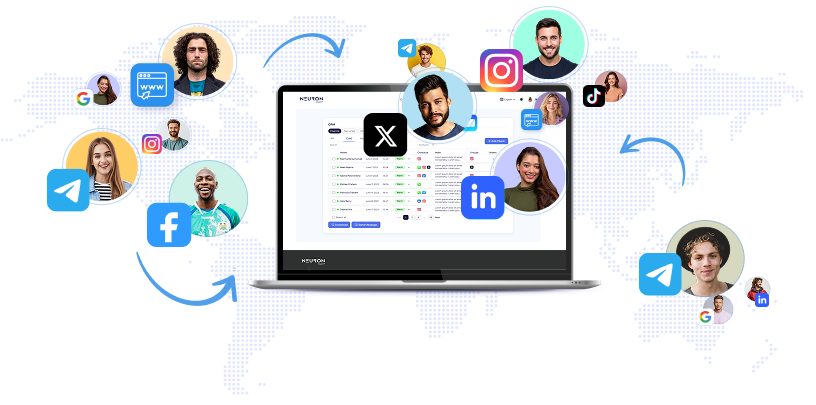
In today’s fast-changing marketing technology landscape, building a strong stack focused on data and artificial intelligence (AI) is vital for companies seeking to remain competitive. Executives increasingly emphasize integrated systems that utilize large datasets to deliver personalized customer experiences and predictive analytics. MarTech recently noted that merging data management with AI tools is transforming marketing approaches—from customer segmentation to campaign optimization—underscoring the need for scalable architectures capable of real-time processing. This transformation is propelled by the surge of consumer data sourced from social media, e-commerce, and IoT devices. According to Taboola’s 2025 trends report on Taboola. com, advancing AI technologies paired with data-driven strategies enable unprecedented hyper-personalization. Marketers must choose stacks that efficiently collect and store data while applying AI algorithms to extract actionable insights, thereby minimizing manual effort. **Navigating the Core Components of a Data-AI Stack** For professionals, such stacks typically begin with data ingestion and storage solutions. Velir’s guide on Velir. com highlights automating data pipelines to ensure clean, accessible data flows into AI models, relying on cloud-based databases optimized for machine learning and seamless analytics integration. Beyond foundational elements, AI integration demands advanced layers like natural language processing and predictive modeling. Harvard’s Division of Continuing Education states on professional. dce. harvard. edu that effective AI-driven marketing requires stacking compatible, modular tools to avoid silos, as further detailed in SmartDev’s 2025 AI tech stack guide on SmartDev. com, which advocates scalable AI frameworks. **Emerging Trends and Best Practices** Recent discussions on X reveal strong interest in agentic AI and low-code tools for building efficient, developer-friendly stacks. Popular components include Next. js frameworks, Neon Database storage, and Together AI APIs, facilitating faster marketing deployments. This aligns with Medium’s Technicity Chronicle’s September 2025 article on Medium. com, which stresses the importance of memory services like ZepAI to maintain context in data-rich AI applications.
Additionally, Canto’s unbeatable marketing tech stack guide (Canto. com) emphasizes selecting tools that integrate effortlessly with data lakes and AI engines. Monterey. ai also details optimizing sales and marketing infrastructure by layering AI atop robust data foundations, focusing on APIs for real-time inference. **Challenges and Strategic Considerations** Constructing such stacks involves challenges including data privacy regulations and complex integration. A May 2025 CIO magazine article on CIO. com warns that retooling IT infrastructure for AI demands prioritizing cybersecurity and cloud scalability, especially critical in marketing where data breaches threaten consumer trust. Experts therefore recommend phased strategies: evaluate existing tools, pilot AI applications, and expand based on performance. DEV Community’s January 2025 post on DEV. to highlights trends in AI-driven app development, encouraging marketers to adopt hybrid models combining on-premise and cloud solutions for greater flexibility. **Future-Proofing Through Innovation** Looking forward, integrating emerging technologies such as edge computing and multilingual generative AI—highlighted in recent X posts on 2025 trends—will enhance these stacks further. For example, AI-driven predictive analytics for market forecasting align with Techstack’s February 2025 overview on Tech-stack. com, which examines AI development trends through 2030. Ultimately, marketing leaders investing in data-AI stacks must commit to continuous adaptation. InfoQ’s software architecture trends report, referenced in recent X discussions, advises modular, smaller-scale system designs to boost agility. Utilizing these insights enables companies to build stacks that meet current demands and anticipate future innovations, fostering sustained growth in an AI-centric era.
Building Effective Data and AI Marketing Tech Stacks for 2025 and Beyond


Examining AI ‘hallucinations’ and Sunday’s Gaza blasts Thomas Copeland, BBC Verify Live journalist As we prepare to close this live coverage, here's a summary of today's key stories

The challenge marketers face today is harnessing AI’s potential without compromising sustainability goals—a question we at Brandtech have been exploring with clients and industry peers.

By 2028, it is expected that 10 percent of sales professionals will use the time saved through artificial intelligence (AI) to engage in 'overemployment,' a practice where individuals secretly hold multiple jobs simultaneously.

OpenAI has rapidly established itself as a leading force in artificial intelligence through a series of strategically crafted partnerships with top technology and infrastructure companies worldwide.

A recent study reveals stark differences in how reputable news websites and misinformation sites manage AI crawler access via robots.txt files, a web protocol controlling crawler permissions.

On Saturday, President Donald Trump shared an AI-generated video showing him in a fighter jet dropping what appears to be feces onto U.S. protesters.

Nvidia Corp.
Automate Marketing, Sales, SMM & SEO

and get clients on autopilot — from social media and search engines. No ads needed
and get clients today